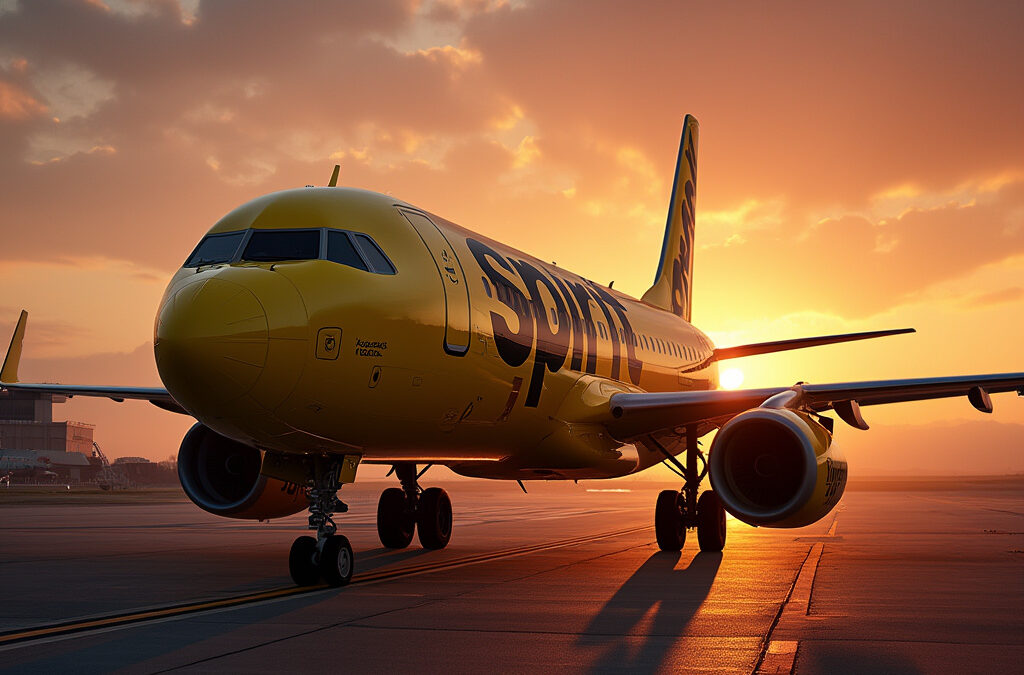“`html
Spirit Airlines to Go Premium After Bankruptcy
In a bold move that signals a major shift in its business strategy, Spirit Airlines has announced plans to transition towards a more premium service model as it emerges from Chapter 11 bankruptcy protection. The ultra-low-cost carrier, known for its no-frills, budget-friendly fares, is repositioning itself to cater to higher-paying customers, marking a significant departure from its historical focus on rock-bottom prices.
The decision comes as Spirit seeks to improve profitability and compete more directly with major carriers. While the airline will retain some elements of its low-cost structure, the pivot toward premium offerings reflects broader changes in the airline industry since the COVID-19 pandemic. Travelers increasingly prioritize comfort and service, with many willing to pay a premium for enhanced experiences.
Spirit’s leadership has hinted at several potential changes, including more comfortable seating options, complimentary amenities that were previously chargeable, and an improved overall customer experience. The airline is also exploring adjustments to its route network to focus on more premium markets, targeting business travelers and higher-paying leisure passengers.
The move is not without risks. Spirit’s brand identity has long been tied to its ultra-low-cost model, and shifting away from this strategy could alienate its price-sensitive customer base. However, the airline’s leadership believes the benefits outweigh the risks. By moving slightly upmarket, Spirit aims to capture more revenue per passenger while maintaining lower costs than full-service airlines.
Spirit’s emergence from bankruptcy with reduced debt and new financing has provided a fresh start for the carrier. The airline now operates a fleet of over 180 aircraft, serving destinations across the U.S., Latin America, and the Caribbean. This financial restructuring has positioned Spirit to invest in its new strategy, which could redefine its role in the competitive airline industry.
The success of Spirit’s premium push will depend on its ability to attract higher-paying customers without losing its core base of budget-conscious travelers. This strategic shift represents a major inflection point for the airline as it charts a new course in a post-pandemic travel landscape.
“`
“`html
Spirit Airlines’ Strategic Pivot: Enhancing Comfort and Service
As Spirit Airlines transitions towards its new premium service model, the carrier is expected to introduce more comfortable seating options across its fleet. This upgrade aims to enhance passenger comfort while maintaining the airline’s cost-efficient structure. Additionally, Spirit plans to offer complimentary amenities that were previously chargeable, such as select in-flight entertainment and snacks, to improve the overall travel experience.
The airline is also exploring adjustments to its route network to focus on more premium markets. This strategic move is designed to attract business travelers and higher-paying leisure passengers. By optimizing its destinations, Spirit seeks to align its services with the demand for elevated travel experiences in key markets.
The success of Spirit’s premium push will depend on its ability to attract higher-paying customers without alienating its price-sensitive base. This strategic shift represents a major inflection point for the airline as it charts a new course in a post-pandemic travel landscape.
“`
Conclusion
Spirit Airlines’ decision to transition toward a premium service model marks a significant turning point in its history. By enhancing comfort, offering complimentary amenities, and refining its route network, the airline aims to capture a share of the higher-paying passenger market while maintaining its cost-efficient structure. The success of this strategy will hinge on Spirit’s ability to balance its new premium offerings with its roots as a budget-friendly carrier. As the airline emerges from bankruptcy with a stronger financial foundation, this strategic shift could redefine its position in the competitive aviation industry.
Frequently Asked Questions
What changes can passengers expect from Spirit Airlines’ new premium model?
Passengers can expect more comfortable seating, complimentary amenities like select in-flight entertainment and snacks, and potential improvements in overall service quality.
Will Spirit Airlines still offer its low-cost options?
Yes, Spirit plans to retain some elements of its low-cost structure while introducing premium offerings, aiming to cater to both budget-conscious and higher-paying customers.
How will Spirit Airlines’ route network change with the new strategy?
Spirit is exploring adjustments to its route network to focus on more premium markets, targeting business travelers and higher-paying leisure passengers in key destinations.
What are the risks of Spirit’s shift to a premium model?
The main risks include potentially alienating its price-sensitive customer base and the challenge of competing directly with major carriers while maintaining lower costs.
How will Spirit’s emergence from bankruptcy impact its new strategy?
Emerging from bankruptcy with reduced debt and new financing has provided Spirit with a fresh start, enabling it to invest in its premium strategy and redefine its role in the industry.

